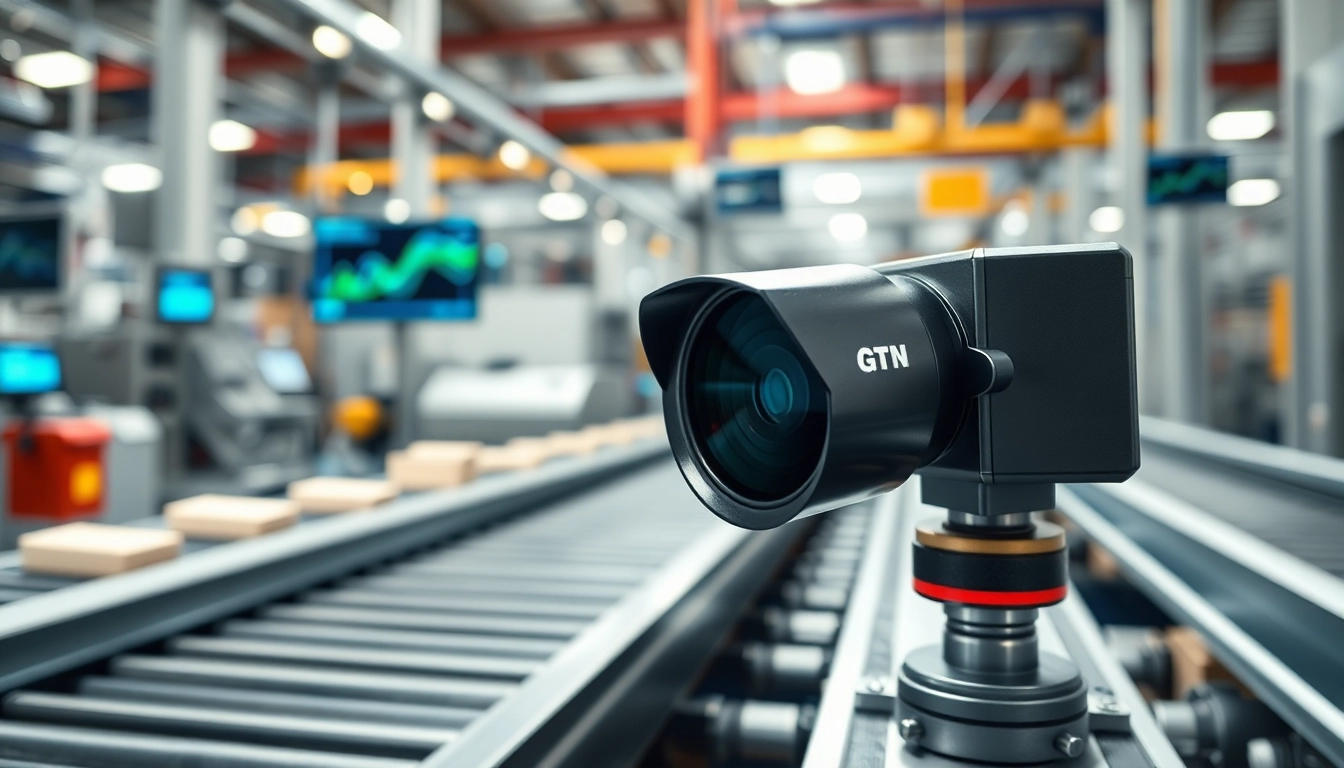
Understanding Machine Vision: Applications and Innovations in Automation
What is Machine Vision?
Machine vision is an innovative technology that combines the capabilities of imaging systems, computational hardware, and analytical software to enable machines to interpret visual data similar to human vision. As industries continue to evolve towards automation, the importance of machine vision has surged, addressing the need for precise inspections, improved productivity, and reduced labor costs. This article will explore the various aspects of machine vision, from its fundamental components to its applications across different sectors, providing insights into the technologies that drive this critical field.
Defining Machine Vision and Its Components
At its core, machine vision involves the use of cameras and software tools to acquire, process, and analyze visual images. Several key components play a pivotal role in the operation of machine vision systems:
- Cameras and Sensors: These are essential for capturing images of objects and environments. The choice of camera technology—be it CCD, CMOS, or specialized cameras—depends on the specific needs of the application.
- Lighting: Proper lighting conditions are critical as they significantly affect image quality. Different types of lighting such as LEDs, lasers, and diffuse lighting techniques are employed based on the inspection requirements.
- Image Processing Software: This software is responsible for analyzing the acquired images. It can detect patterns, identify defects, and guide actions based on the visual data it processes.
- Control Systems: The integration of machine vision with robotic systems allows for automation in various industrial processes, improving efficiency and accuracy.
How Machine Vision Works: A Basic Overview
The functioning of machine vision systems can be broken down into several stages:
- Image Acquisition: The process begins with the camera capturing images of the target objects or scenes.
- Image Preprocessing: This involves refining the captured images by adjusting contrast, removing noise, and enhancing features important for analysis.
- Feature Extraction: The software analyzes the images to identify key attributes such as edges, shapes, and colors that are relevant for the task at hand.
- Analysis and Decision Making: The processed data is analyzed based on predefined criteria, allowing for actions such as sorting, labeling, or rejecting products.
- Feedback Loop: Information is often fed back into the system to improve accuracy and effectiveness over time, utilizing machine learning algorithms to adapt based on past performance.
Applications of Machine Vision in Industries
Machine vision technology is utilized across a range of industries due to its versatility and precision, enhancing operational capabilities in the following areas:
- Quality Control: In manufacturing, machine vision systems are essential for conducting quality assurance checks. These systems inspect products for defects, ensuring that only components that meet quality standards proceed through the production line.
- Packaging Inspection: Automated systems utilize machine vision to verify that packaging is correctly labeled, sealed, and intact, minimizing the chances of human error.
- Logistics and Supply Chain: Machine vision accelerates scanning and sorting processes in warehouses, allowing for real-time tracking of inventory and reducing delivery times.
- Healthcare Applications: In the medical sector, machine vision is used for imaging analyses such as tumor detection in radiology or automating laboratory testing processes.
Key Technologies Behind Machine Vision
The Role of Cameras and Sensors in Machine Vision
Cameras serve as the eyes of machine vision systems, capturing images that can be analyzed for various applications. The type and specifications of the camera can significantly affect the system’s performance. For instance:
- Resolution: Higher resolution cameras provide detailed images, which is particularly essential in applications requiring precise measurements.
- Frame Rate: A higher frame rate allows for capturing fast-moving objects, which is vital in industries like automotive manufacturing where speed is critical.
- Specialized Cameras: Some applications may require thermal, IR, or 3D cameras, showcasing the diversity of tools available in the realm of machine vision.
Software Algorithms: Analyzing Visual Data
Machine vision relies heavily on advanced algorithms that enable complex image processing and analytical tasks. Some of the key algorithms include:
- Pattern Recognition: This helps identify specific shapes or designs in images, facilitating processes such as sorting and grading.
- Image Segmentation: Algorithms separate images into segments for easier analysis, enabling the system to focus on specific features or defects.
- Machine Learning Techniques: Modern machine vision systems often incorporate machine learning to improve their accuracy over time by learning from historical data.
Integration with Robotics and Automation Systems
The synergy between machine vision and robotics is profound. The integration allows for automated processes that can adapt based on real-time visual feedback. This not only increases efficiency but also enhances precision in applications such as:
- Robotic Picking Systems: These systems rely on machine vision to identify and select items from shelves or assembly lines accurately.
- Guidance in Assembly Tasks: Machine vision systems help robotic arms in guiding components into place during assembly, enhancing speed and reducing errors.
- Quality Checks: Robots equipped with vision systems can autonomously conduct checks on products to ensure they meet quality standards before packaging.
Applications of Machine Vision across Different Sectors
Machine Vision in Manufacturing: Quality Control
In the manufacturing sector, machine vision has revolutionized the quality control process. Early detection of defects can save companies significant costs associated with reworks and returns. Here’s how machine vision is applied in quality control:
- Defect Detection: Automated vision systems can detect deviations from product specifications, such as scratches or discoloration on items.
- Dimensional Verification: Companies can utilize vision systems to ensure that products are produced to exacting standards in terms of size and shape.
- Documenting Product History: Visual records are often maintained to create a comprehensive quality history for each item, assisting in compliance and auditing processes.
Visual Inspection in Logistics and Supply Chain
Logistics relies on efficient processes, and machine vision streamlines operations through accurate visual inspections:
- Barcode and QR Code Reading: Automatic scanning helps in tracking inventory movement and verifying shipments against order lists.
- Sorting and Routing: Visual systems can classify products based on size, weight, or codes, ensuring they are routed correctly for distribution.
- Real-Time Monitoring: The integration of machine vision in logistics allows for continuous monitoring of stock levels and shipment conditions, enabling proactive measures.
Machine Vision for Healthcare and Medical Applications
The healthcare sector benefits greatly from machine vision technology, where precision can be literally life-saving:
- Imaging Systems: Machine vision plays a critical role in image analysis for diagnostics, assisting radiologists in detecting tumors or anomalies in medical images.
- Laboratory Automation: In clinical labs, machine vision can automate tests and analysis, drastically reducing human error while increasing throughput.
- Patient Monitoring: Vision systems can be utilized to monitor patient status, alerting healthcare professionals to changes in condition based on defined visual parameters.
Best Practices for Implementing Machine Vision
Choosing the Right Machine Vision System
Implementing a machine vision system involves careful consideration and strategic planning. Here are best practices to follow:
- Assess Application Needs: Define clear objectives based on specific operational requirements. Understanding the application ensures that the chosen system is fit for purpose.
- Evaluate Components Carefully: Select cameras, lighting, and software that align with the budget and technical requirements, focusing on quality and reliability.
- Consider Scalability: Choose a system that can grow with your operation, accommodating future changes without requiring complete overhauls.
Common Challenges and How to Overcome Them
Despite the advantages, implementing machine vision can pose several challenges:
- Image Quality Issues: Inadequate lighting or camera choice can lead to poor image quality. Implementing controlled lighting and high-quality cameras is essential.
- Complexity of Integration: Successfully integrating machine vision with existing systems can be complex. Engaging with experienced vendors and consultants often eases this process.
- Maintenance and Calibration: Regular maintenance and calibration of equipment are crucial to ensure consistent performance. Establishing a routine inspection schedule can mitigate issues.
Optimizing Performance Metrics and Reliability
To maximize the efficacy of machine vision systems, organizations should focus on several performance metrics:
- Accuracy and Precision: Regular testing ensures that the system meets accuracy standards relevant to its application.
- Throughput: Monitoring the speed and efficiency of processing images can help identify bottlenecks in operations.
- Failure Rate: Tracking the occurrence of false positives or negatives can shine a light on areas needing improvement and adjustments.
- Return on Investment: Evaluating the cost-effectiveness of the implemented system against operational improvements is vital for justifying investments.
Future Trends in Machine Vision Technology
The Growing Role of AI in Machine Vision
As artificial intelligence continues to develop, its integration into machine vision is transforming processes. AI enhances machine vision capabilities through:
- Deep Learning: AI can learn to identify defects or features with greater accuracy by analyzing vast datasets, improving over time with machine learning.
- Enhanced Decision Making: AI algorithms can analyze visual data and make real-time decisions, such as adjusting production processes based on the quality of outputs.
- Predictive Maintenance: Utilizing AI to predict potential failures based on visual inspections before they happen can save costs related to downtime and repairs.
Advancements in Sensor Technologies
Sensor technology is on the verge of significant advancements, which will further propel the capabilities of machine vision. Trends include:
- Multispectral Imaging: Sensors that capture images across different wavelengths are expanding possibilities in fields like agriculture and environmental monitoring.
- Higher Sensitivity Cameras: Innovations in camera technology will enable better quality images in lower light conditions.
- Integration with IoT: Incorporating sensors into the Internet of Things ecosystem will allow for enhanced data collection and analytics.
The Impact of Machine Vision on Industry 4.0
Machine vision is a cornerstone of the Industry 4.0 paradigm, which emphasizes interconnected smart technologies. The relationship manifests through:
- Smart Factories: Machine vision aids in creating fully automated factories, where production processes can adapt to changes in real-time.
- Data-Driven Decisions: Machine vision systems collect vast quantities of data, providing insights that drive continuous improvement initiatives.
- Enhanced Collaboration: Integration with other automated systems allows for synchronized operations across the supply chain, improving efficiency and responsiveness.
